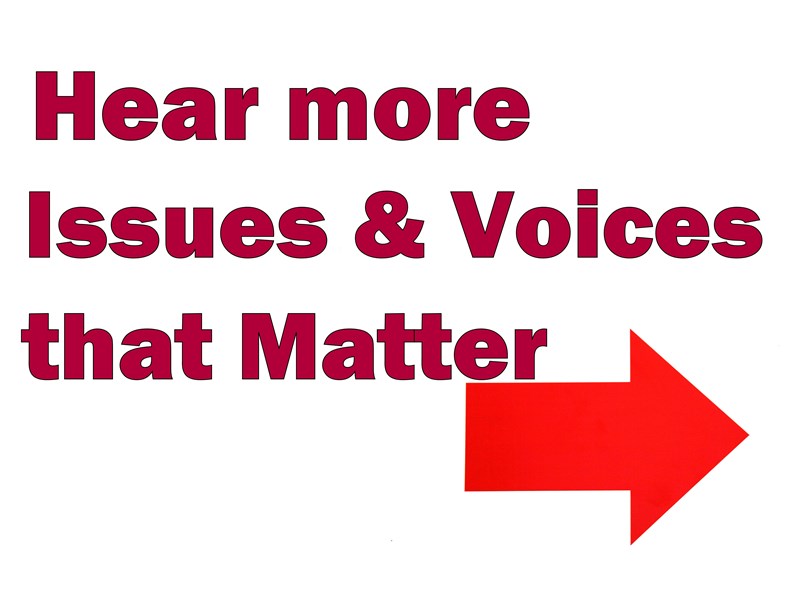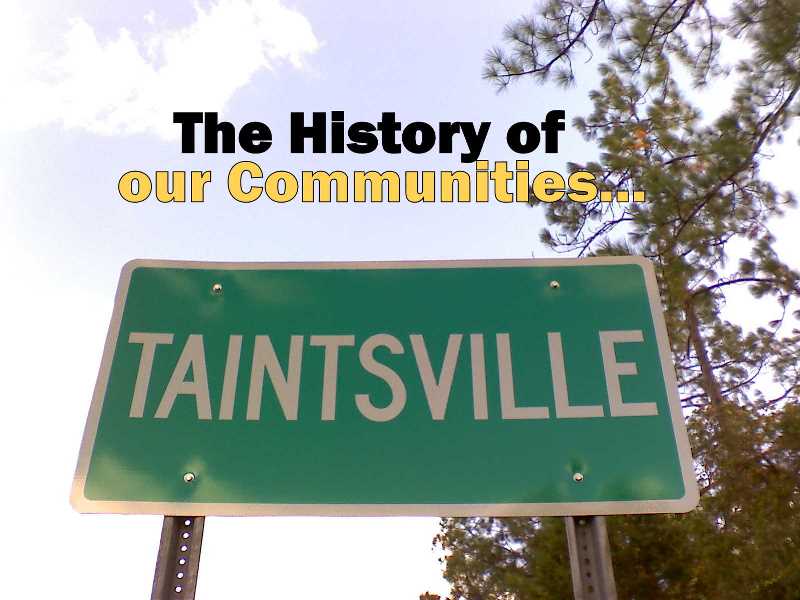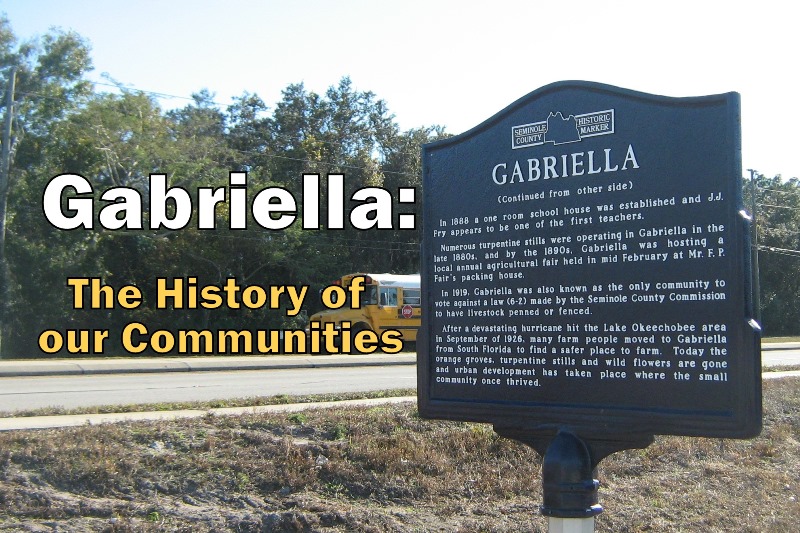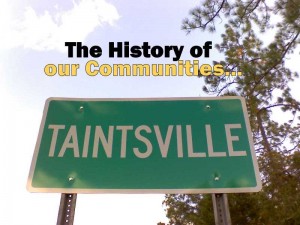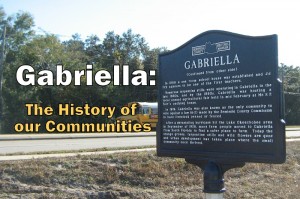Below is a collection of questions frequently asked of Carroll McKenney Foundation for Public Media, Inc. Click on the question and the answer will appear immediately below it. Click on the same question again and the answer will disappear. Clicking on links within some answers will take you to a page with additional information.
Section 1: Corporate FAQ
-
What is the name of the company?
Carroll McKenney Foundation for Public Media Incorporated.
-
What is Carroll McKenney Foundation for Public Media (CMF)?
A Florida non-profit corporation organized and administered exclusively for literary and educational purposes to develop, fund, produce and distribute public media content.
-
Has CMF been incorporated?
Yes. On January 7, 2008 the Florida Secretary of State’s Department of Corporations granted approval. Click here to see CMF’s Articles of Incorporation. Such approval classified CMF as a not-for-profit corporation. The state of Florida also recognizes CMF as state sales tax exempt and approved to conduct charitable solicitations.
-
Has the US Internal Revenue Service (IRS) issued its “Letter of Determination” recognizing CMF as exempt from federal income tax under Section 501 ( c) (3) of the Internal Revenue Code?
Yes. CMF filed Form 1023 with the IRS on July 7, 2008, giving the IRS information necessary for it to consider a determination. On December 19, 2008, the IRS determined CMF to be an income tax exempt, public charity qualified to receive tax deductible gifts under section 501(c)(3) of the Internal Revenue Code. The determination is retroactive to the date of CMF’s incorporation, January 7, 2008.
-
How is CMF governed?
CMF is governed by a lay board of 16 trustees primarily recruited from the Central Florida area. Trustees serve voluntarily and without financial compensation to set CMF’s vision, policy, and direction and guide its overall mission.
On January 7, 2008, CMF was established by 3 incorporating or “founding” board members. They were…
a. Stephen McKenney Steck, as Founder, CEO, Treasurer and Trustee (former President and Chief Executive Officer, WMFE-TV & Radio)
b. Desta L. Horner, as Co-founder, President and Trustee (Citizen Advocate; former Winter Springs High School teacher) and
c. Richard C. Steck II, as Trustee (Travel writer, Where To Go Next)Throughout 2008, additional citizen advocates were recruited to the board as “inaugural” trustees.” They are…
d. David Albertson, President, Albertson International
e. Linda W. Chapin, Director, Metropolitan Center for Regional Studies; former Orange County Mayor
f. Judith M. Duda, Citizen Advocate
g. Jose A. Fajardo, President and Chief Executive Officer, WMFE-TV & Radio
h. Robert Kovacevich, Principal, Avatar Company
i. Bob Opsahl, Anchor, Eyewitness News, WFTV-Channel 9
j. Marena Grant Morrisey, Executive Director, Orlando Museum of Art
k. Manning Pynn, former Public Editor, Orlando Sentinel
l. Nanci Schwartz, President, TheCommConnection
m. Charles S. Stuart, President, Essence Marketing
n. Marjorie Bekaert Thomas, President, Ivanhoe Broadcast News
o. Emerson R. Thompson, Jr., Senior Judge, State of Florida
p. Aldo Vivona, former Senior VP and Chief Financial Officer, WMFE-TV & RadioAs initially intended and as a result of a larger board, CMF revised several of its “officer” positions so that the current CMF officers are…
a. Judith M. Duda, Chair of the Board
b. Aldo Vivona, Treasurer
c. Marena Grant Morrisey, Secretary, and
d. Stephen McKenney Steck, President and Chief Executive OfficerThe board meets at least the minimum number of times per year necessary to accommodate state and federal regulations and to appropriately address CMF business in a responsible manner.
Stephen McKenney Steck will not serve as chair, nor will any McKenney or Carroll family member.
-
Is CMF a “private” family foundation?
No. Carroll McKenney Foundation for Public Media will have a broad base of financial support compared to a “private” foundation which receives its support from a small number of donors. The IRS has classified CMF as a “public charity,” recognized as one that will or has received substantial support from grants, governmental units, and/or contributions from the general public. Further, CMF does not make grants to other sources from its funds; rather, CMF applies for and accepts grants for its own projects.
-
Why use the word “foundation” in the company title?
For several reasons…
a. To focus attention to the distinction of “charity” and “non-profit-ness” versus the image of a for-profit media company.
b. To avoid the perception of being yet another “production company” and,
c. To communicate a sense of distinction and style.The word “foundation” usually communicates a “basis” or an “idea,” in this instance like the idea of “public media.” Additionally, to the uninitiated observer, “foundation” often suggests an “eleemosynary” nature relating to a dependence on charitable gifts.
Substituting other words in place of “foundation,” like “center” or “institute,” tended to suggest “place, location,” or an “edifice.”
To the end-user, the foundation’s “place” is solely content and mission, rather than a building or a location.
-
Who is leading the establishment of CMF?
Proposing the vision and launching CMF is the primary undertaking of Stephen McKenney Steck in collaboration with the CMF board to whom Steck reports.
As a native Central Floridian, Steck is widely recognized in his community and the public media field for his near life-long work at the public broadcasting stations of WMFE-TV and radio. He is known to be an exceptional executive with vision, persistence and passion. In his 50-year media career “getting it done” and getting it “done right” have been characteristics granted him by his colleagues.
Prior to Steck’s retirement in 2008, he successfully led key aspects of programming, production, technology, budgeting, staffing, marketing and fundraising for the public broadcasting stations of WMFE. Increasingly, Steck became the face and voice of WMFE in the region and beyond. His nurturing “stick-to-it-tiv-ness” left WMFE a legacy of 4-decades of consistent leadership. Observers have said Steck built and led the stations with integrity, credibility, inclusiveness, ethics and trust – values found lacking in many a current-day institution and, many say, often found lacking in media, too.
At age 64 on his own initiative and with the appreciation for the experience he gained in those 5-plus decades, Steck retired, stepping away from WMFE at the height of his career toward a new challenge: launching a non-profit company committed to funding, producing and distributing public media content.
As Steck is no stranger to fundraising, programming or management, he is also no stranger to the subjective talent of producing. Returning to his production and programming roots, Steck now applies his credentials at a more direct level…for and in the community in which he has worked and called home all his life!
-
Why launch a public charity like CMF during such difficult economic times?
Because CMF has the favorable advantage of timely focus, an effective business model, a unique program niche, and a growing potential audience.
A Timely Focus: In difficult times, attention to local issues and voices at a zip-code level seldom have a medium which substantially or sustainably focuses on their need. Big macro issues continue to be broadly addressed by local legacy media yet, seemingly, less attention is spent on the impact those issues have at the micro or zip code level. CMF will have this narrow focus.
An Effective Business Model: Broadcast media’s public interest focus is diminished by standards of measure which increasingly demand they maintain the largest audience by adhering to a business model which often results in giving the audience what it wants rather than giving the audience what it needs to function as a responsive and informed society. Achieving the former often comes at the expense of the latter. By its public service nature, CMF has a different standard of measure allowing attention to the latter.
A Unique Program Niche: Over-the-air broadcast technology is expensive to acquire and maintain. Broadcasters have substantial infrastructure expense (transmitters, towers, studios, mobile production gear, staff, and electricity). By comparison, Internet distribution of programming is more efficient and cost effective. CMF’s expenses will be comparatively and proportionally less while rendering an increasingly more relevant program service to an underserved audience.
A Growing Potential Audience: Audience migration from broadcast media toward Internet-based program services is increasing. CMF will be among those services toward which audiences are moving and are relying on more intensely.
CMF’s use of Internet technology and its attention to zip-code level issues and voices will position it as a public service institution worthy of financial support and capable of prospering in difficult economic times.
-
Who is Carroll McKenney?
These are family names important to CMF’s founder, Stephen McKenney Steck. Steck attributes the programming, fundraising and leadership success he has gained in his 50 year career in media to a certain “DNA” implanted within him by his family at an early age:
a. persistence and focus came from his father, Richard Carroll Steck;
b. unconditional love and acceptance came from his mother, Helen McKenney Steck, and
c. creativity and curiosity came from his brother, Richard Carroll Steck IIIn recognition that those family members and values are fundamental to the creation and nurturing of CMF’s mission, Steck chose to honor their legacy in naming the company by the use of their middle names.
-
Will Stephen McKenney Steck, as CMF’s founder and CEO, be monetarily compensated?
No. Like any CMF trustee, Steck will serve voluntarily and without pay as a trustee on the CMF board and, likewise, as CEO and chief fundraiser for CMF. Such lack of monetary compensation is in keeping with that of all CMF officers and trustees including Steck’s spouse, Desta L. Horner, and his brother, Richard C. Steck II, both of whom serve on the CMF board.
Such pro bono civic leadership by Steck or other CMF trustees does not preclude any trustee from receiving compensation for approved services or expenses directly related to their participation in specific program production activities such as producer, host, editor, reporter, writer, etc. In each instance, CMF’s Conflict of Interest Policy requires the CMF board to review and consent to any such compensation prior to its award. Additionally, a market study must be provided to the board to confirm the appropriate amount of such compensation. The trustee recipient of such compensation may not participate in the board vote on this matter.
-
Has Steck made any gift to CMF beside his time?
Yes. Steck – and his wife, Desta L. Horner – have personally funded CMF start-up and initial operating expenses. The CMF board has reviewed Steck’s gift-making to assure its compliance with state and federal regulations.
-
Where will CMF offices be located?
CMF’s office is in Oviedo, Florida at the residential address of the founder. Such a rent-free location also serves to minimize start-up expenses and occupancy overhead.
CMF’s mailing address is:
P.O. Box 620070
Oviedo, Florida 32762-0070For the first 1-2 years, initial content production requirements will be such that the need for a permanent or fixed-base of operations will be unlikely. However, when inescapable “studio” requirements occur, such facilities will be rented locally as part of a grant-funded project or provided in collaboration with a production partner who maintains such facilities. Usually, most recording or production situations will occur in the field or on-location negating the need for studio rental.
In the mid-term, the next 2-3 years, CMF’s offices may relocate to accommodate anticipated administrative and recording facility needs. Such needs would principally consist of 1 or 2-small audio interviewing/recording/editing studios, 1 larger 3-4 person interview studio, a reception/clerical/office area, and a meeting room. Such facility needs may comfortably be accommodated within 1,100 to 1,700 square feet with a modest amount of lease-hold improvements ---principally related to acoustics, sound absorption, and studio furniture needs
In any event, it is contemplated that CMF’s physical location will remain in the east Seminole County area.
-
What is CMF’s vision?
CMF’s vision is to become an established, unique and sustained Central Florida public media treasure, respected and utilized for its trusted program content and audio distribution methods and its collaborative relationship with like-minded Central Florida initiatives. (Adopted by the CMF board on 2/24/09)
-
What is CMF’s mission?
CMF’s mission is to develop, fund, produce and distribute via the Internet downloadable audio podcasts and on-line audio streaming of program content reflecting issues and voices that matter in Central Florida; doing so in a style that first advances those issues and voices rather than advancing CMF’s own voice. (Adopted by the CMF board on 2/24/09)
-
What technology tools will CMF deploy to accomplish its mission?
CMF will utilize contemporary electronic media platforms to distribute such information in a non-commercial and non-profit manner. Principally, CMF will rely upon the Internet to distribute its programming to anyone with access to the World Wide Web primarily through on-demand audio streaming, downloadable audio podcasts, blogs, subscriber based RSS feeds (really simple syndication).
-
Has a Web site address been secured for this purpose?
Yes. Though not yet fully launched, the Web address is https://www.cmfmedia.org. An August 2009 launch date is anticipated.
Section 2: Programming FAQ
-
What is “public media?”
In a broad sense, “public media” is commonly defined as media whose mission is to serve or engage a public. Public media include traditional publicly-funded legacy broadcasters and networks like the Public Broadcasting Service (PBS) or National Public Radio (NPR).
More recently, particularly with the growth of computers, cell phones and other digital devices capable of receiving the Internet, “public media” has expanded to include a less traditional and more inclusive public interest organization – like CMF. Such growth and the concurrent migration of audiences away from traditional media have led some to use the phrase "public purpose media."
In the context of CMF’s mission, public media is a collection of one or more programming subjects produced and distributed in the public interest to enhance or inform recipients about local issues that are not substantially or sustainably being addressed by the local mainstream electronic media.
-
What are potential “public media” subjects and formats CMF might develop?
CMF will focus its resources on local issues and voices that matter to Central Florida.
Each audio program or feature is available to listeners who visit CMF’s Web site.
Each program will be supported on-line with enhanced content directly related to that program’s title, theme or objective. Enhanced content will include…
a. The complete interviews of program participants with material not included in the actual program,
b. Links to other relevant Websites,
c. Still pictures (and occasional motion video) related to the program, and
d. A listener comment section encouraging written reaction to and discussion of the program or feature. The section will be moderated by CMF.Each of the initial features will fall under the broad series title Central Florida Matters.
This program will be posted on line every third Thursday. Like chapters in a book, short features in each Central Florida Matters program will be of varying lengths -- generally 6 to 15 minutes -- shaped by the amount of time necessary to effectively communicate the goal of the series.
Community outreach projects will be developed and hosted by CMF. Such projects may include content-related forums, seminars, and subject-specific workshops.
CMF will establish its own issue selection process so as to avoid duplication of programming on issues that are being adequately and sustainably addressed by local mainstream broadcast media.
-
How will listeners know that a new program is available on line?
As subject matter is selected for production by CMF, on-line notices as well as off-line community promotion will be initiated to publicize the availability of each new program.
Potential listeners will be encouraged to subscribe (for free) to the program via CMF’s E-Letter, blog or at CMF’s own Web site. Subscription will enable CMF to automatically alert those subscribers to the availability of new program material. Additionally, utilizing popular web-content-search engines (Google, Yahoo, etc.), each feature posted on-line (and the series associated with each) will gain an ever-expanding roster of listeners.
Similar steps will be taken off-line to reach potential listeners predisposed to an interest in the feature’s subject matter but who are not necessarily oriented to Web searches. This non-Web based community promotion will take place simultaneously via local media and associations aligned with an interest in the feature’s subject matter.
-
Why is CMF launching its programming on the Internet rather than broadcast television or radio?
Because more and more audiences are migrating to the Internet. They capitalize upon the ubiquitous presence of digital devices -- such as computers, IPods and so called smart phones like IPhones -- to receive content posted on the Internet which is not as available to them from the traditional legacy media of radio or television broadcast stations.
-
Will CMF collaborate with other organizations?
Yes, and as often as possible. CMF will seek to maximize its reach and resources within the material it produces by collaborating with appropriate subject matter institutions, specialists or communication colleagues such as: local educational and social service organizations, non-profit institutes or centers, area independent producers, or even public radio and television stations.
Section 3: Revenue & Expense FAQ
-
What methods will CMF use to raise the revenue necessary to fund its activities?
As a non-profit public charity, CMF will turn to a wide range of potential donors to help fund its activities. Typically, those donors include…
a. local, regional and national grant making foundations and other similar organizations;
b. local, state and federal government grant making agencies;
c. public and private businesses;
d. and individuals.CMF’s fundraising methods will include single and multi-year grant proposals, direct personal appeals, on-line campaigns, and special events.
Ideally and in the long-term, CMF will operate with a goal to break-even, i.e., its expenses will not exceed its revenue. When revenues are not sufficient to cover program project expenses, CMF will not produce the program until such time as revenues are in hand or formally pledged, or CMF will cover the balance needed through other initiatives.
Administrative expenses will be kept at a minimum. Such a minimum is enhanced by CMF’s principals serving without compensation. To keep other expenses at a minimum and when possible and appropriate, CMF will seek other pro bono services and in-kind trades.
-
What steps will CMF take to provide for its own “institutional sustainability?”
CMF envisions raising additional funds for the creation of a permanent endowment to assure the long-term sustainably of CMF’s core mission and minimal operational needs.
-
What are examples of expenses CMF will face as it evolves?
There are three categories of expense. They are broadly defined as “start-up,” “capacity” and “programming” expenses.
“Start-up” expenses have been funded by CMF’s founder Stephen McKenney Steck and his wife, Desta Horner, with their own personal funds. For the past 18-months they have funded such reasonable and customary expenses as…
a. Incorporation filing fees,
b. legal and tax counsel,
c. initial business insurance premiums (general liability and directors and officers insurance),
d. association dues and memberships,
e. minimum but immediately necessary technical equipment and production and accounting software,
f. program related interconnection fees (telephony for program production and Internet connections),
g. logo design and branding,
h. E-letter, blog and Web design and testing.
i. conference and training registration, travel, telephone and mailing expenses, and
j. stationery and associated office supplies.“Capacity” expenses are generally related to the fundamental items of technology necessary to advance CMF’s content and service mission. It also includes the office or administrative equipment customarily necessary to start any small business.
a. Technology expenses generally relate to production equipment and computer hardware and software. Production equipment examples include sound mixers, microphones and speakers. Computer hardware includes laptop and desktop computers for editing, servers, external storage devices, backup devices, communication interconnections and devices necessary to create Web pages, podcasts, blogs, etc. Computer software includes those application programs necessary to record, mix and edit sound, as well as applications for the Web.
b. Administrative expenses include necessary common-practice equipment such as office computers, telephones, printers, copiers, and scanning machines. Business software is also included here for office applications related to word processing, finance and accounting, and the management of customer (donor) relationships.
c. Generally, salaries are not included in this “capacity” category except in the area of vendor or consultant-related fees for specific professional advice and counsel on such narrow issues as information technology, audio and video engineering, telephony and interconnectivity, graphic design, and legal and tax advice.
“Programming” expenses cover items necessary to actually conceive, develop, produce, promote, and fundraise for CMF’s content projects. Salaries and other forms of professional compensation are included here.
a. Conception expenses include the acquisition of topic related research and inspection such as books, texts, abstracts and media scans
b. Content development expenses may include travel, proposal writing, clerical assistance and/or some legal and creative consultants.
c. Producing content creates expenses for writers, directors, voice talent, editors, collaborators, clerical assistance, equipment rental, travel, copyright fees and recording stock.
d. Promotion expenses include design and illustration consultation, production, paid advertising, and printing.
e. Fundraising expenses include prospect research, donor cultivation events, travel, proposal writing, printing, progress and final reports, etc.
f. Each of the above programming expense categories are more related to people than equipment. With a few exceptions, compensation for each required profession will always be arranged on an as needed, fee-based, independent contractor basis. The compensation will be directly related to the expense of each project. When the project is completed, the compensation stops.
g. As previously addressed, Steck, as CMF’s founder and CEO, will serve compensation-free on a pro bono basis in many if not all of the above positions, particularly during the first year of more of CMF’s evolution. Thereafter, it is conceivable he may receive project-related compensation only for his production and content services, not for his leadership or his fundraising skills.
h. By CMF’s 2nd or 3rd year, with content and fundraising success, the CMF board will consider the additional expense of a CMF office and minimal permanent staff. A part-time office manager/clerical assistant will be the first consideration followed by a full-time Web master/operations manager. Perhaps a fundraising officer may also be considered. It is conceivable that “capacity” grants might initially be obtained to fund the first year or two of staffing and occupancy (rental). Thereafter, CMF projects will each need to proportionally support such overhead expenses on an on-going basis.

